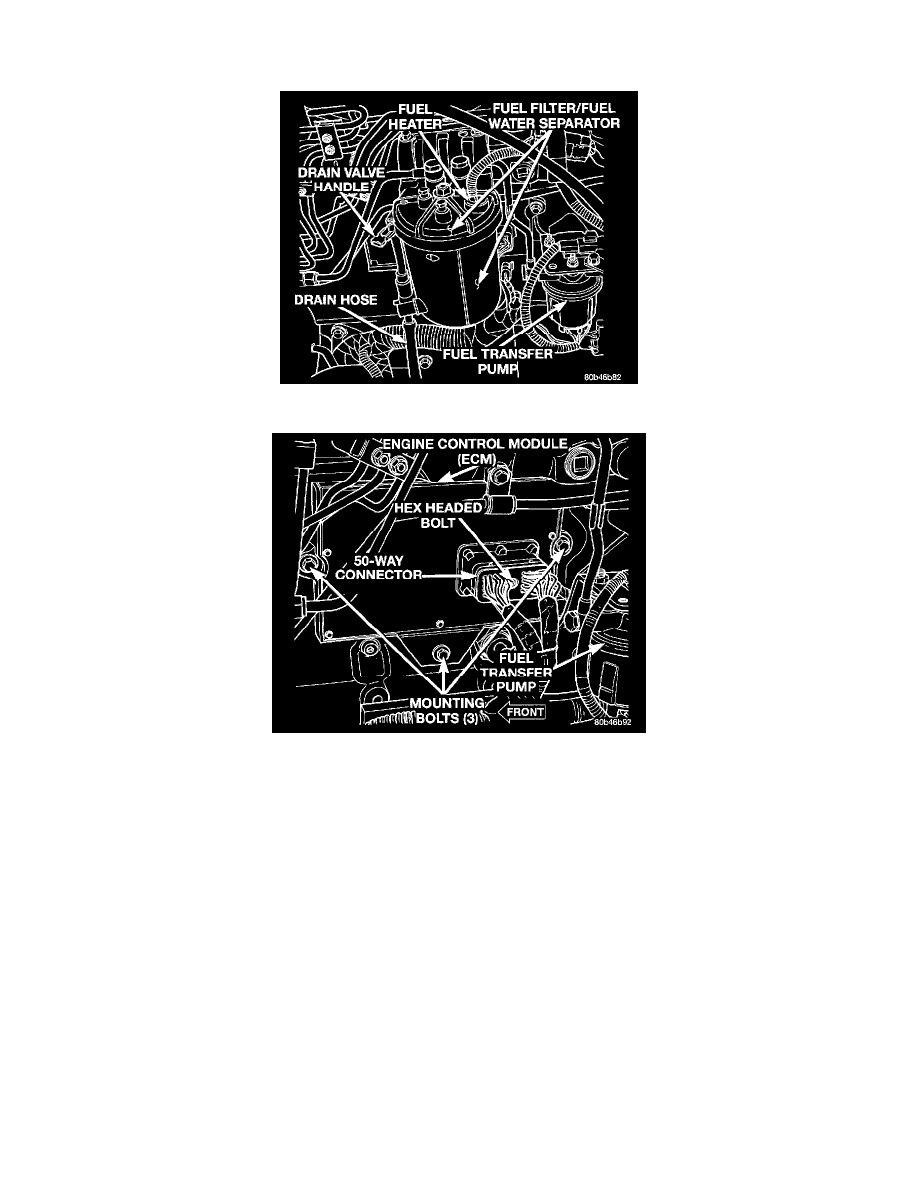RAM 2500 Truck 4WD L6-5.9L DSL Turbo VIN 6 (1999)

Fuel Boost Pump / Fuel Transfer Pump: Description and Operation
FUEL TRANSFER (LIFT) PUMP
Fuel Transfer Pump Location
Engine Control Module (ECM) Location
The fuel transfer pump (fuel lift pump) is located on the left-rear side of the engine cylinder block above the starter motor. The 12-volt electric
vane-type pump is operated and controlled by the Engine Control Module (ECM). The ECM is bolted to the left side of the engine block behind
the fuel filter.
The purpose of the fuel transfer pump is to supply (transfer) a low-pressure fuel source: from the fuel tank, through the fuel filter/water separator
and to the fuel injection pump. Here, the low-pressure is raised to a high-pressure by the fuel injection pump for operation of the high-pressure fuel
injectors. Check valves within the pump, control direction of fuel flow and prevent fuel bleed-back during engine shut down.
Normal current flow to the pump is 12 amperes.
With the engine running, the pump has 2 modes of operation: Mode 1: 100 percent duty-cycle with a minimum pressure of 10 psi except when the
engine is cranking. Mode 2: 25 percent duty-cycle with minimum pressure of 7 psi with the engine cranking
The 25 percent duty-cycle is used to limit injection pump inlet pressure until the engine is running.
The transfer pump is self-priming: When the key is first turned on (without cranking engine), the pump will operate for approximately 2 seconds
and then shut off. The pump will also operate for up to 25 seconds after the starter is engaged, and then disengaged and the engine is not running.
The pump shuts off immediately if the key is on and the engine stops running.
